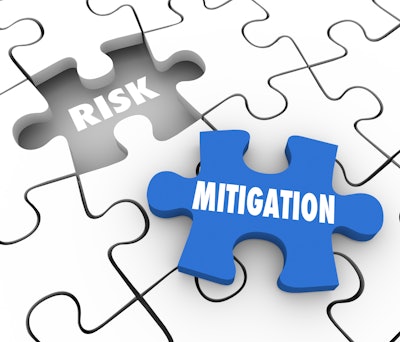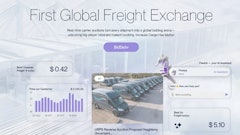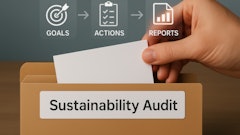
Everstream Analytics’ 2025 outlook identifies the five most likely supply chain events that will impact supply chain operations this year.
“Some of this year’s risks are avoidable. Creating a robust plan with powerful mitigation tactics and an overall monitoring strategy can help protect supply chains from cyberattacks, for example, or help ensure materials sourcing. Others aren’t so easy. If the atmosphere creates flood conditions for your town, it’s coming whether you’ve prepared or not. But early notice and swift action can save inventory and lives. In both cases, supply chain operators must apply a combination of planning, deep monitoring, and mitigation to weather the storms coming in 2025,” according to Everstream Analytics.
Key takeaways:
- Climate change, specifically floods, rank No. 1 as the most likely supply chain event. Floods accounted for 70% of weather-related risks in 2024.
- Geopolitical instability with increased tariff risk remain the second most likely supply chain event in 2025. The spillover effect from the Israel-Hamas war has intensified the political turmoil in the Middle East. The Red Sea remains a global hot spot, with continuous Houthi attacks on Red Sea vessels. Even if the traffic along the Suez Canal route returns to full throttle in 2025, this shift would cause weeklong processing delays, container backlogs, and a spike in congestion at many European seaports. In Asia-Pacific, new trade restrictions and the souring of cross-strait relations between China and Taiwan could disrupt the Taiwan Strait, a major route for almost half of the world’s container shipping. Plus, the incoming U.S. administration’s proposed tariff increases, including a global baseline tariff of 10–20%, a 60% tariff on Chinese imports, and a 100% tariff on goods from de-dollarizing countries, pose significant risks to global supply chains.
- Growing reliance on artificial intelligence and cloud computing within supply chains is creating new opportunities for bad actors, thus creating an uptick in cybersecurity measures. In 2024, the most cyberattacks were reported in the electronics and manufacturing sectors. In 2025, cyberattacks will primarily arrive via sub-tier supply chains, where criminals can more easily exploit common programming errors and vulnerabilities.
- Between rising regulations, new tariffs, and long-term or exclusive contracts, rare minerals and metals will be harder than ever and more expensive to obtain. Political tensions over the Russia-Ukraine war led to restrictions on Russian metal imports by the United States and the UK. In 2024, a surge in these agreements, particularly for lithium, a critical battery material, has been observed. Despite increased international concern over the limited supply of these rare commodities, de facto control remains due to single countries often dominating key metal smelting or mining, including aluminum, nickel, cobalt, gallium, germanium, and magnesium. Additionally, China’s increased control over supply chains could enable it to impose broader export restrictions.
- Rising levels of concern surrounding labor conditions in China and the country’s ongoing geopolitical rivalry with the United States have pushed many companies to find alternative suppliers in India, Mexico, and other Southeast Asian countries. However, many of these emerging economies do not have adequate laws or enforcement mechanisms for workers, especially migrants from other developing countries and unknown sub-tier suppliers who may still be located in those areas. As a result, multiple countries are now considering legislation or strengthening existing regulations on forced labor.




















